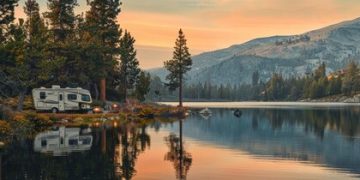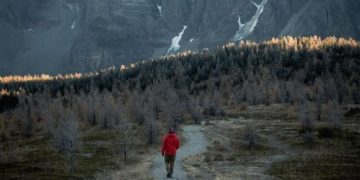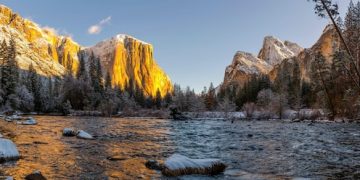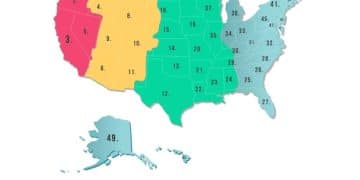The Ultimate US Road Trip Planner: 7 Unmissable Routes for 2025
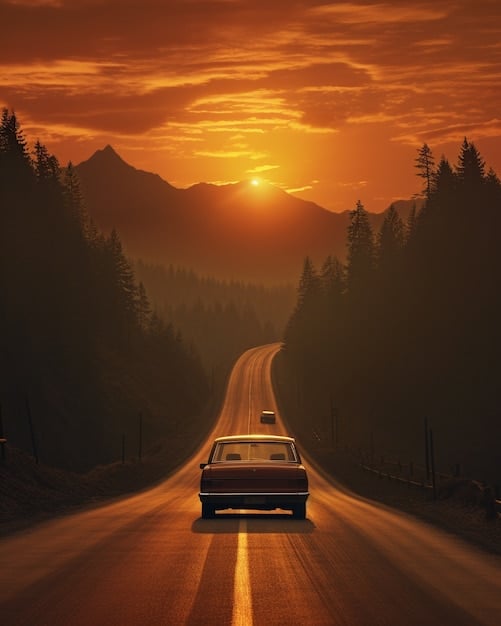
Embark on an unforgettable American adventure with a meticulously planned road trip, navigating 7 iconic routes that promise breathtaking landscapes and unique cultural experiences across the diverse terrains of the United States in 2025.
There’s an undeniable allure to hitting the open road, especially when the destination is as vast and varied as the United States. Planning The Ultimate US Road Trip Planner: 7 Routes You Can’t Miss in 2025 isn’t just about choosing a path; it’s about curating an experience that resonates with your spirit of adventure. From the rugged coastlines to the majestic mountains, and from bustling cities to serene deserts, America’s highways offer an unparalleled journey through its heartland and soul.
Unveiling America’s Epic Road Trip Routes
Embarking on a road trip across the United States is more than just a vacation; it’s an immersive journey into the nation’s diverse tapestries. Each route tells a distinct story, offering a unique blend of natural wonders, historical landmarks, and cultural insights. Preparing for such an adventure involves meticulous planning, from understanding the best times to travel to packing essentials that ensure comfort and safety on the road. The charm of a road trip lies in its flexibility, allowing spontaneous detours and unexpected discoveries that often become the most cherished memories.
When considering an epic American road trip, the key is to balance popular attractions with hidden gems. These journeys are about the landscapes unfolding outside your window, the small towns you pass through, and the people you meet along the way. Whether you’re seeking solitude in nature or the vibrant energy of major cities, there’s a route designed to fulfill every traveler’s desire. The anticipation of the journey itself becomes part of the excitement, turning the planning phase into an integral part of the adventure.
The Iconic Pacific Coast Highway (California)
The Pacific Coast Highway, or PCH (Highway 1), offers one of the most stunning coastal drives in the world. Stretching over 650 miles from Dana Point to Leggett, this route is famous for its dramatic cliffs, redwood forests, and picturesque beach towns. While a full drive can take several days, focusing on segments like Big Sur can provide an unforgettable experience.
- Big Sur’s Breathtaking Beauty: Towering redwoods meet the Pacific, offering dramatic views and challenging hikes.
- Charming Coastal Towns: Explore Carmel-by-the-Sea, Santa Barbara, and Monterey for unique shops, art galleries, and fresh seafood.
- Hearst Castle: A historical architectural marvel offering guided tours and spectacular vistas.
Driving the PCH requires attention due to winding roads and potential rockslides, especially after heavy rains. However, the vistas from turnouts and the fresh ocean air make every mile worthwhile. It’s a journey best savored slowly, with plenty of stops to soak in the scenery and local culture.
From Canyons to Coasts: The American Southwest Loop
The American Southwest is a region of striking contrasts, where arid deserts meet vibrant red rock formations and ancient cultures leave their indelible mark. A road trip through this area typically encompasses parts of Arizona, Utah, Colorado, and New Mexico, revealing landscapes that often feel otherworldly. This route is an adventurer’s paradise, with opportunities for hiking, photography, and exploring indigenous history.
Planning for the Southwest involves understanding the vast distances between attractions and the seasonal weather variations. Summer brings intense heat, while spring and fall offer milder temperatures, ideal for outdoor activities. The magic of the Southwest lies in its expansive skies and the profound silence of its wilderness, interrupted only by the wind or the occasional wildlife.
Grand Canyon, Zion, and Bryce National Parks
This trifecta of national parks offers an unparalleled experience of the American West’s geological wonders. Each park possesses unique characteristics, from the immense scale of the Grand Canyon to Zion’s towering sandstone cliffs and Bryce’s distinctive hoodoos.
- Grand Canyon National Park: Witness one of the world’s most impressive natural formations, with multiple viewpoints and hiking trails.
- Zion National Park: Famous for its narrow canyons, lush riverside trails, and challenging climbs like Angels Landing.
- Bryce Canyon National Park: Home to unique geological structures called hoodoos, creating an ethereal landscape.
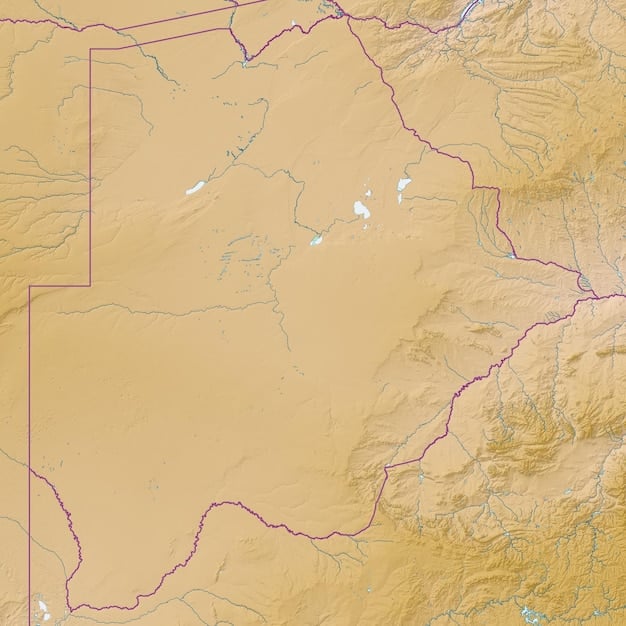
Linking these parks requires strategic driving, but the journey between them is equally scenic, revealing changes in elevation and vegetation. Reservations for lodging and popular permits are often necessary, especially during peak season, due to the immense popularity of these natural treasures. The contrast between the deep canyons and the high plateaus provides a continuous sense of awe and discovery.
Tracing History: The East Coast Odyssey
The East Coast of the United States offers a different kind of road trip, steeped in history, culture, and diverse urban and natural landscapes. From the historic streets of Boston to the sun-soaked beaches of Florida, this journey is a blend of old-world charm and modern vibrancy. It’s an ideal route for those interested in American history, coastal scenery, and exploring some of the nation’s most iconic cities.
Navigating the East Coast can involve city traffic, especially around major metropolitan areas, so planning driving times and considering public transport within cities is wise. However, the reward is access to world-class museums, acclaimed dining, and historical sites that tell the story of America’s founding and evolution. The changing seasons also bring distinct beauty to this region, from vibrant fall foliage to bustling summer beaches.
Colonial Charm to Coastal Wonders
This route can take various forms, but a classic journey might begin in New England, weaving through historical landmarks, then heading south along the coastline, exploring charming beach towns and major cities.
Starting in Boston, a city rich with revolutionary history, one can follow the Freedom Trail and explore historic neighborhoods. From there, a drive through picturesque New England offers quaint towns, fall foliage (if timed correctly), and fresh seafood. Moving south, major cultural hubs like New York City, Philadelphia, and Washington D.C. provide opportunities for urban exploration, with world-class museums, iconic monuments, and diverse culinary scenes.
Farther south, the route can extend to the Outer Banks of North Carolina, known for their wild horses and historical lighthouses, or continue to the vibrant beaches and theme parks of Florida. Each state along the East Coast presents its own unique flavor, from the rich Gullah culture of the South Carolina Lowcountry to the maritime traditions of Maine. This journey offers a continuous narrative of American life, from its early beginnings to its current dynamic forms, making it a compelling choice for a comprehensive road trip.
Wilderness and Wonders: Rocky Mountain High
A journey through the Rocky Mountains is an immersion into some of America’s most magnificent natural landscapes. This region, primarily encompassing parts of Colorado, Wyoming, and Montana, is characterized by towering peaks, pristine alpine lakes, and abundant wildlife. It’s an ideal road trip for nature lovers, hikers, and anyone seeking breathtaking scenery and outdoor adventures.
The best time to visit the Rockies largely depends on your desired activities. Summer offers ideal conditions for hiking and outdoor exploring, while fall brings stunning golden aspens. Winter transforms the region into a snowy paradise for skiing, though road conditions can be challenging. Regardless of the season, preparedness for changing weather and respecting wildlife are paramount.
Yellowstone, Grand Teton, and the Majestic Rockies
This route often includes visits to two of America’s most celebrated national parks, Yellowstone and Grand Teton, offering a close encounter with geothermal wonders, dramatic peaks, and diverse ecosystems.
- Yellowstone National Park: Home to the iconic Old Faithful geyser, vibrant hot springs, and a sprawling ecosystem with bison, elk, and grizzly bears.
- Grand Teton National Park: Features dramatic, jagged peaks rising above serene lakes, offering stunning reflections and excellent hiking opportunities.
- Rocky Mountain National Park (Colorado): Known for its Trail Ridge Road, one of the highest continuous paved roads in North America, offering spectacular alpine views.
Beyond the national parks, the smaller towns and scenic drives throughout the Rockies provide charm and additional adventure. Opportunities for fly-fishing, white-water rafting, and mountain biking abound. The sheer scale and beauty of the mountains provide a powerful sense of perspective, making this a truly rejuvenating and awe-inspiring journey that connects travelers with the raw power of nature.
The Musical Roads: Deep South & Blues Highway
For those whose souls resonate with rhythm and history, a road trip through the Deep South, particularly along the Blues Highway (Highway 61), offers a profound journey into America’s musical and cultural heritage. This route winds through Mississippi, Tennessee, Louisiana, and other Southern states, exploring the birthplaces of blues, jazz, and rock ‘n’ roll, alongside significant civil rights landmarks.
The Southern heat can be intense in summer, making spring and fall ideal for comfortable exploration. This journey is as much about the food—from soulful BBQ to zesty Cajun cuisine—as it is about the music. It’s an immersive experience that reveals the layers of American culture, from its triumphs to its struggles, all expressed through its powerful artistic traditions.
From Memphis to New Orleans: Echoes of Music and History
This segment of the Deep South road trip is particularly rich in musical legacy, connecting iconic cities known for their distinctive sounds and historical importance.
Starting in Memphis, Tennessee, visitors can explore Graceland, Elvis Presley’s iconic home, and Sun Studio, where rock ‘n’ roll legends were born. The city’s Beale Street pulsates with live blues music, offering a vibrant nightlife experience. Heading south along Highway 61, the journey delves into the heart of the Mississippi Delta, the birthplace of the blues. Small towns like Clarksdale and Indianola house museums and juke joints that preserve the genre’s authentic roots, telling stories of hardship, resilience, and extraordinary talent.
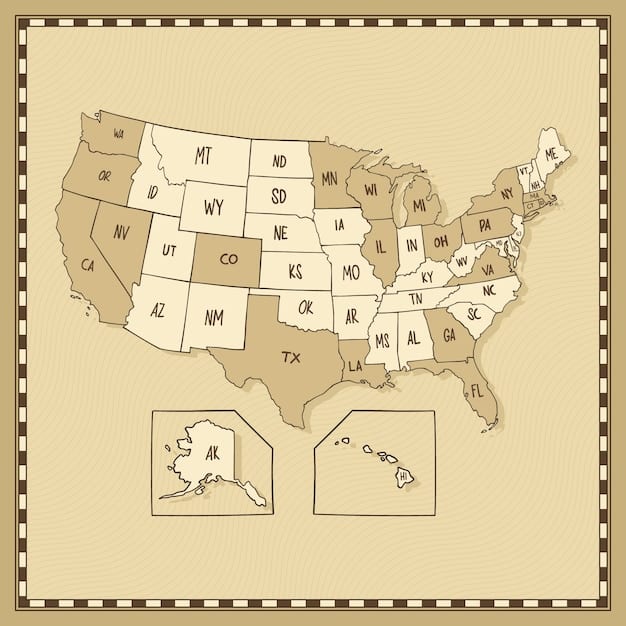
The journey culminates in New Orleans, Louisiana, a city unlike any other in America. Known for its vibrant jazz scene, unique Creole and Cajun cuisine, and rich historical architecture in the French Quarter, New Orleans offers a sensory overload. From parades to cemeteries, voodoo to beignets, the city’s unique spirit provides a fitting crescendo to a soulful road trip through America’s musical heartland. This trip is more than sightseeing; it’s about feeling the pulse of American music and history.
Northern Exposure: The Great Lakes Loop
The Great Lakes region of the United States offers a refreshingly different road trip experience, combining stunning freshwater coastlines, dense forests, and charming lakeside towns. This loop typically traces the shores of Lake Michigan, Lake Superior, and potentially Lake Huron, providing a blend of natural beauty, outdoor activities, and maritime history. It’s an ideal retreat for those seeking cooler temperatures, lush landscapes, and a more serene, less-trafficked journey.
Summer and early fall are the most popular times to explore the Great Lakes, with pleasant weather for water sports, hiking, and enjoying the vibrant seasonal colors. The region is rich in maritime stories, with lighthouses dotting the shorelines and museums preserving the tales of shipwrecks and bustling ports. This journey connects travelers with the vastness of these inland seas and the natural wonders that surround them.
Michigan’s Pictured Rocks and Wisconsin’s Northwoods
Focusing on the northern parts of Michigan and Wisconsin, this segment of the Great Lakes loop offers rugged beauty and a wealth of outdoor adventures.
- Pictured Rocks National Lakeshore (Michigan): Discover colorful sandstone cliffs, clear blue waters, and numerous waterfalls, best explored by kayak or boat tour.
- Mackinac Island (Michigan): A car-free island offering a step back in time, with horse-drawn carriages, historic forts, and beautiful Victorian architecture.
- Apostle Islands National Lakeshore (Wisconsin): Explore sea caves by kayak, hike forested islands, and visit historic lighthouses on Lake Superior.
The journey through the Wisconsin Northwoods provides opportunities for quiet reflection in vast forests and around numerous smaller lakes, ideal for fishing and wildlife observation. The region’s small towns offer local hospitality and a glimpse into a way of life deeply connected to nature and the changing seasons. From the dramatic cliffs of Lake Superior to the tranquil inland lakes, the Great Lakes Loop provides a peaceful yet adventurous escape.
Exploring the Heart of America: Route 66 Revival
Route 66, “The Mother Road,” represents the quintessential American road trip. While not all of its original 2,448 miles from Chicago to Santa Monica are still drivable as a continuous highway, segments of it have been preserved and revived, offering a nostalgic journey through the heart of America. This trip is about experiencing classic Americana, from quirky roadside attractions and historic diners to vast open landscapes that evoke a sense of freedom and adventure.
Traveling Route 66 is a step back in time, reconnecting with a bygone era of motor lodges, neon signs, and the optimistic spirit of post-war America. It’s a journey that combines historical significance with kitsch, offering endless photo opportunities and chances to connect with the unique character of diverse American communities. The revival of Route 66 is driven by its enduring cultural significance and the desire to preserve its legacy.
Classic Americana: From Illinois to California
While driving the entire original route is challenging, focusing on key preserved sections allows travelers to fully immerse themselves in the Route 66 experience.
Starting in Illinois, visitors can explore attractions like the Gemini Giant and the Route 66 Hall of Fame and Museum. As the route moves west through Missouri, Kansas, Oklahoma, and Texas, travelers encounter iconic stops like the Chain of Rocks Bridge, the Blue Whale of Catoosa, and the Cadillac Ranch. Each state offers its own unique spin on the Route 66 legend, with local museums and diners showcasing the road’s influence on their communities.
The journey through New Mexico and Arizona reveals changing landscapes, from desert vistas to mountains, alongside Native American cultural sites and charming old towns like Winslow. Crossing into California, the final leg of the journey leads to the Santa Monica Pier, the traditional end point of the Mother Road. This road trip is less about speed and more about lingering at each eccentric stop, absorbing the stories and character of a truly iconic American journey that continues to captivate generations.
| Key Route Aspects | Brief Description |
|---|---|
| 🗺️ Diverse Terrains | From coastal highways and desert landscapes to majestic mountains and historic routes. |
| 🏞️ Natural Wonders | Access to national parks like Grand Canyon, Yellowstone, and Pictured Rocks. |
| 🎶 Cultural & Historical | Explore iconic destinations like Route 66, the Blues Highway, and East Coast historical sites. |
| 🚗 Planning Essentials | Tips for best travel times, packing, and making spontaneous detours. |
Frequently Asked Questions About US Road Trips
▼
The ideal time depends heavily on the chosen route. Generally, spring (April-May) and fall (September-October) offer milder weather and fewer crowds across most regions, making them excellent choices for diverse landscapes. Summer is popular for national parks but can be very hot in deserts, while winter is best for snowy regions or specific southern routes.
▼
Costs vary widely based on duration, mileage, lodging choices (camping vs. hotels), dining preferences, and attractions. Budget travelers might spend $50-$100 per day, while those seeking more comfort could expect $150-$300+. Key expenses include gas, accommodation, food, and national park passes, which should all be factored into your planning.
▼
Beyond clothing, essentials include a first-aid kit, vehicle emergency tools (jumper cables, spare tire), a physical map (for areas with no signal), power banks, reusable water bottles, snacks, and entertainment for long drives. Depending on your route, consider layers of clothing, hiking gear, and sun protection like hats and sunscreen.
▼
A balanced approach often works best. Have a general itinerary with key destinations and estimated daily mileage, but allow room for spontaneity. Booking popular accommodations or national park permits in advance is advisable, especially during peak season, but leaving some days open for unexpected detours or exploring charming towns can lead to memorable discoveries.
▼
Safety is paramount. Always inform someone of your route, especially when traversing remote areas. Ensure your vehicle is well-maintained and checked before departure. Drive defensively, be mindful of speed limits, and avoid driving drowsy. Staying aware of local wildlife, especially at dusk and dawn, is also crucial in many rural and park areas.
Conclusion
The allure of a US road trip lies in its unparalleled freedom and the sheer diversity of experiences it offers. From the dramatic vistas of the Pacific Coast Highway to the historic echoes of Route 66, and from the rugged beauty of the Rockies to the soulful rhythms of the Deep South, America’s roads invite exploration. Each of the seven routes discussed provides a distinct narrative, weaving together natural wonders, cultural heritage, and the spirit of adventure. Planning is key to a successful journey, but it’s the unexpected detours and spontaneous discoveries that often leave the most lasting impressions. Embarking on one of these meticulously chosen routes in 2025 promises not just a vacation, but a journey of discovery and unforgettable memories across the vibrant tapestry of the United States.
